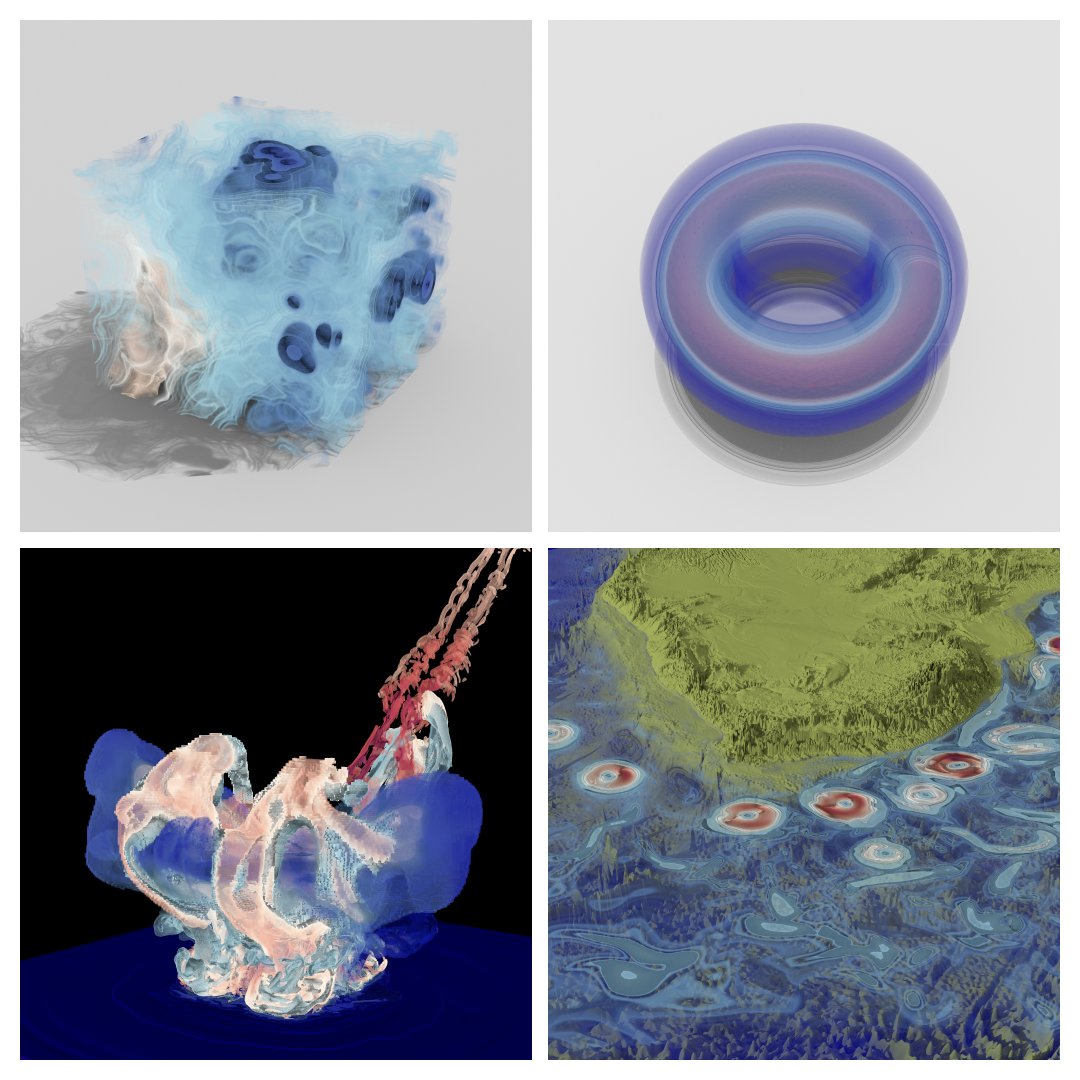Ray-traced Shell Traversal of Tetrahedral Meshes for Direct Volume Visualization
Alper Şahıstan, Serkan Demirci, Nate Morrical, Stefan Zellmann, Aytek Aman, Ingo Wald, Ugur Gudukbay
External link (DOI)
View presentation:2021-10-29T13:10:00ZGMT-0600Change your timezone on the schedule page
2021-10-29T13:10:00Z

Keywords
Life Sciences, Health, Medicine, Biology, Bioinformatics, Genomics, Physical & Environmental Sciences, Engineering, Mathematics, Computer Graphics Techniques, Specific Computing and Rendering Hardware, Algorithms, Scalar Field Data, Volume Rendering
Abstract
A well-known method for rendering unstructured volumetric data is tetrahedral marching tet marching, where rays are marched through a series of tetrahedral elements. However, existing tet marching techniques do not easily generalize to rays with arbitrary origin and direction required for advanced shading effects or non-convex meshes. Additionally, the memory footprint of these methods may exceed GPU memory limits. Interactive performance and high image quality are opposing goals. Our approach significantly lowers the burden to render unstructured datasets with high image fidelity while maintaining real-time and interactive performance even for large datasets. To this end, we leverage hardware-accelerated ray tracing to find entry and exit faces for a given ray into a volume and utilize a compact mesh representation to enable the efficient marching of arbitrary rays, thus allowing for advanced shading effects that ultimately yields more convincing and grounded images. Our approach is also robust, supporting both convex and non-convex unstructured meshes. We show that our method achieves interactive rates even with moderately-sized datasets while secondary effects are applied.